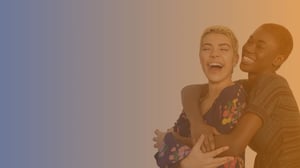
Diversity definition: what does diversity mean?
Home / DE&I glossary / Diversity definition
Diversity definition
Diversity is the range of individual distinctions amongst people, including differences in racial background, gender, age, experiences, abilities, and viewpoints. It entails hiring people with a variety of experiences and perspectives to ensure a wider range of ideas and to encourage creativity and innovation in the workplace.
Diversity comes in a variety of forms but can refer to:
- Cultural diversity: This kind of variation is tied to each individual's ethnicity and is typically a result of the norms we internalise from our upbringing in society or the values of our families. Multinational corporations tend to have more diverse workplace cultures.
- Religious diversity: The existence of many religions and spiritual beliefs—or lack thereof—in the workplace is referred to as religious diversity.
- Age diversity: Working with people of various ages and, most importantly, generations is known as age diversity. In the workplace, for instance, millennials, GenZers, and GenXers can collaborate and work together.
- Gender diversity: Gender and sex can be used to refer to male and female employees in the conventional sense. For instance, businesses aiming to attain a 50/50 balance between employees who identify as male and employees who identify as female may occasionally use the phrase "gender balance". However, since gender is being redefined more and more, the term "gender diversity" would be more accurate, given the variety of genders.
- Sexual orientation/LGBTQ+ diversity: The presence of an LGBTQ+ workforce, as well as the openness of being “out” in the workplace.
- Disability diversity: The number of people with physical/learning/mental disability in the workplace and the provision of accessibility services to this employee population.
- Socio-economic diversity: The variety of socio-economic backgrounds of the employee population and where they come from, as well their distribution across the leadership/management levels.
Want to deepen your DEI knowledge?
Get definitions, insights and strategies delivered every two weeks.Real-world context
- Recruitment: The impact of diversity starts at the beginning of the employee lifecycle through the hiring and recruitment process. A diverse organisation will source candidates from a variety of backgrounds and ensure that their hiring process is inclusive to enable those candidates to succeed.
- Retention: Once the candidates are hired it is essential that organisations track retention of their diverse staff. If, for whatever reason, there is a high number of diverse employees leaving after a short period of time, it may signify issues with belonging and inclusion in the workplace.
- Leadership: Diversity matters not only in the number of diverse people in the workplace but also their distribution across organisations. Diversity should be represented across all levels, including leadership and management roles, as well the across the junior employee population.
Related services
To continue reading about FAIRER Consulting and our DE&I consultancy services, please see some of our related pages here:
Can’t find what you’re looking for?
Book a complementary one-to-one consultation session with us and allow us to explore your specific needs in detail. We create bespoke solutions to ensure our strategies are aligned with your business’ goals.




